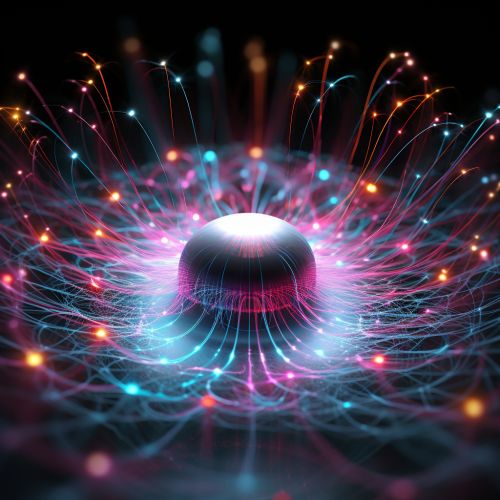Electric charge
Introduction
Electric charge is a fundamental property of matter that gives rise to all electric forces and electric fields. It is carried by subatomic particles such as electrons and protons, and is quantized, meaning it occurs in discrete amounts. The smallest possible electric charge is the charge of an electron or proton, which is defined as a unit charge.
Types of Electric Charge
There are two types of electric charge: positive and negative. Protons carry a positive charge, while electrons carry a negative charge. The charge of a proton and an electron are equal in magnitude but opposite in sign. This is the basis for the principle of charge conservation, which states that the total electric charge in an isolated system remains constant.
Coulomb's Law
The interaction between charged particles is described by Coulomb's Law, which states that the force between two charges is directly proportional to the product of their charges and inversely proportional to the square of the distance between them. This law is fundamental to the study of electricity and magnetism, and is one of the four Maxwell's Equations that form the foundation of classical electrodynamics.
Electric Fields
An electric field is a region around a charged particle where other charges experience a force. The direction of the field is taken to be the direction of the force it would exert on a positive test charge. The electric field is radially outward from a positive charge and radially in toward a negative charge.


Electric Current
Electric current is the flow of electric charge. It is measured in amperes (A). The direction of an electric current is by convention the direction in which a positive charge would move. Thus, the current in a wire is directed in the opposite direction of the movement of electrons, the carriers of charge in metals.
Charge Conservation
The principle of charge conservation is a fundamental law of nature. It states that the total electric charge in an isolated system remains constant. This principle is a consequence of the law of conservation of energy.
Quantum Electrodynamics
In the quantum theory of electromagnetism, known as Quantum Electrodynamics (QED), electric charge is understood as a property of the quantum fields that make up matter and light. In QED, the interactions between charged particles are mediated by photons, the particles of light.
